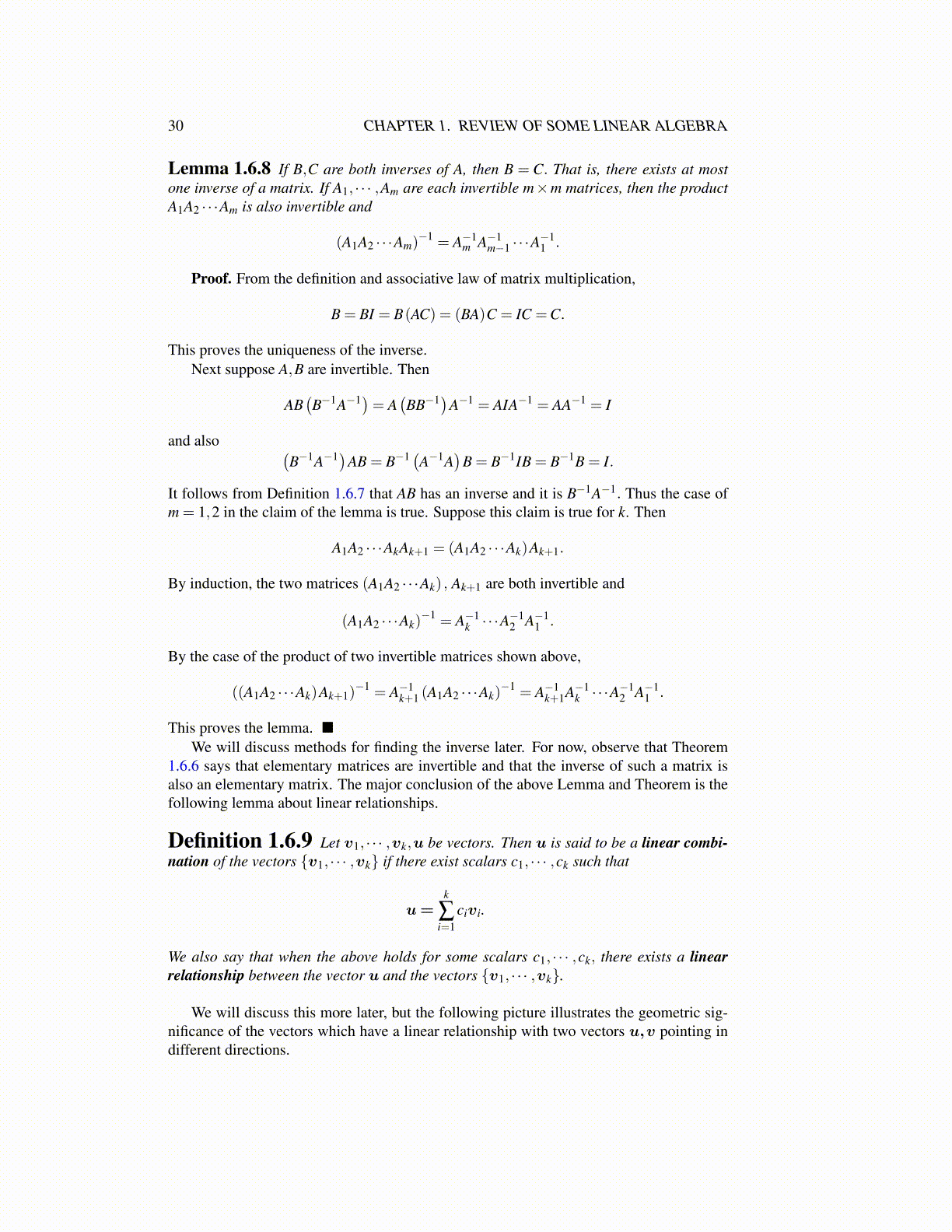
30 CHAPTER 1. REVIEW OF SOME LINEAR ALGEBRA
Lemma 1.6.8 If B,C are both inverses of A, then B = C. That is, there exists at mostone inverse of a matrix. If A1, · · · ,Am are each invertible m×m matrices, then the productA1A2 · · ·Am is also invertible and
(A1A2 · · ·Am)−1 = A−1
m A−1m−1 · · ·A
−11 .
Proof. From the definition and associative law of matrix multiplication,
B = BI = B(AC) = (BA)C = IC =C.
This proves the uniqueness of the inverse.Next suppose A,B are invertible. Then
AB(B−1A−1)= A
(BB−1)A−1 = AIA−1 = AA−1 = I
and also (B−1A−1)AB = B−1 (A−1A
)B = B−1IB = B−1B = I.
It follows from Definition 1.6.7 that AB has an inverse and it is B−1A−1. Thus the case ofm = 1,2 in the claim of the lemma is true. Suppose this claim is true for k. Then
A1A2 · · ·AkAk+1 = (A1A2 · · ·Ak)Ak+1.
By induction, the two matrices (A1A2 · · ·Ak) , Ak+1 are both invertible and
(A1A2 · · ·Ak)−1 = A−1
k · · ·A−12 A−1
1 .
By the case of the product of two invertible matrices shown above,
((A1A2 · · ·Ak)Ak+1)−1 = A−1
k+1 (A1A2 · · ·Ak)−1 = A−1
k+1A−1k · · ·A
−12 A−1
1 .
This proves the lemma. ■We will discuss methods for finding the inverse later. For now, observe that Theorem
1.6.6 says that elementary matrices are invertible and that the inverse of such a matrix isalso an elementary matrix. The major conclusion of the above Lemma and Theorem is thefollowing lemma about linear relationships.
Definition 1.6.9 Let v1, · · · ,vk,u be vectors. Then u is said to be a linear combi-nation of the vectors {v1, · · · ,vk} if there exist scalars c1, · · · ,ck such that
u=k
∑i=1
civi.
We also say that when the above holds for some scalars c1, · · · ,ck, there exists a linearrelationship between the vector u and the vectors {v1, · · · ,vk}.
We will discuss this more later, but the following picture illustrates the geometric sig-nificance of the vectors which have a linear relationship with two vectors u,v pointing indifferent directions.